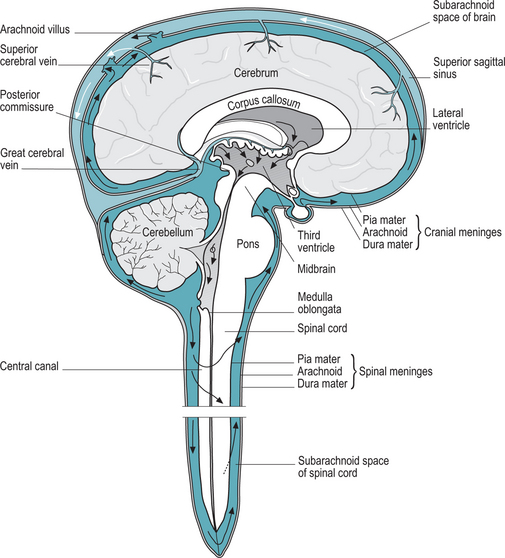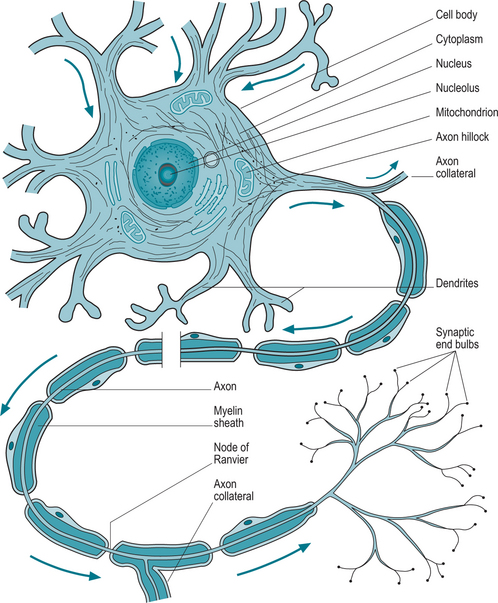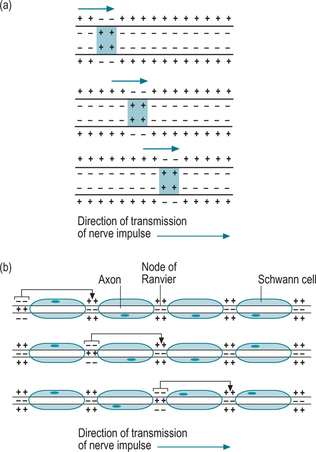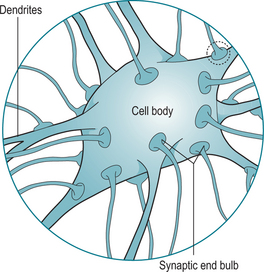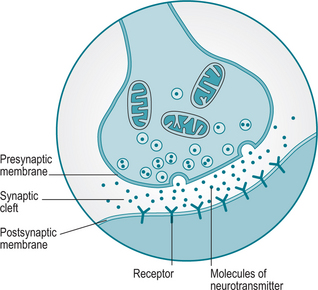Chapter 8 Epilepsy and other neurological conditions
INTRODUCTION
Epilepsy is one of the most common neurological disorders seen in pregnant women. It is also responsible for increased maternal and fetal mortality and morbidity rates in the UK. In the most recent Confidential Enquiries into Maternal and Child Health 2000–2002 (Lewis & Drife 2004), there were 13 deaths from epilepsy during childbirth. Epilepsy is a disorder of the central nervous system in which neurons are inappropriately stimulated causing abnormal sensations and seizures. Other disorders of the nervous system that may be seen by the midwife are multiple sclerosis and myasthenia gravis, which will be briefly discussed at the end of the chapter.
The goal in caring for the pregnant woman with epilepsy is to keep her relatively free of seizures and to minimize the effects of epilepsy on both the pregnant woman and her fetus. Antiepileptic drugs can have a teratogenic effect on the fetus. During an epileptic fit, the woman may fall and injure herself or her baby, and may suffer from hypoxia, which could also affect the fetus. Knowledge of the condition, its signs and symptoms and how to prevent epileptic seizures by supporting women to comply with treatment, is essential in midwifery practice.
RELEVANT ANATOMY AND PHYSIOLOGY
The central nervous system is made up of the brain containing the cerebral cortex, which contains centres of motor and sensory control, and the spinal cord, through which nerve pathways carry neurons to all parts of the body (Fig. 8.1). Neurons detect changes in both the internal and external environment and respond to them to maintain homeostasis with body organs and systems. Epilepsy is an abnormal functioning of these neurons.
The central nervous system is composed of two principal types of tissue: grey matter which contains the cell bodies of neurons, and white matter through which neurons travel. The white appearance is due to the colour of the myelin sheath that surrounds neurons (see below). Cell bodies appear grey as they are not surrounded by myelin.
Other regions of the central nervous system include:
A neuron consists of (Fig. 8.2):
In the neuron, this imbalance is also present and is used to create a rapid change in electrical charge along the length of the axon (Fig. 8.3). As a result of stimulation of a dendrite (by a change in temperature, stretch in an organ, damage to cells for example), sodium channels in the cell membrane near to the dendrite open and allow Na+ to flood into the cell. This process is called depolarization and the result is that the inside of the cell at this point on the axon becomes positively charged in comparison with the outside of the cell.
The next region of the axon will still be maintaining its resting potential and because unlike charges attract, the positive ions within the cell will be attracted towards the area of negativity; thus the impulse will spread down the length of the axon.
Transmission of information
An action potential occurs as the result of stimulation of a dendrite by a stimulus. This stimulus may be the result of a sensation that needs to be sent to the cerebral cortex or may be in response to the interpretation of sensory input requiring an action or a motor output such as contraction of a muscle. Senses that stimulate an action impulse can take many forms. These may be touch, light, heat or damage to organs or tissues, changes in ion concentration, chemical concentration, or pressure. As a result of dendritic stimulation, an action potential is triggered in the neuron detecting the sensation. However, this neuron does not stretch all the way from the source of the stimulus to the brain. Several neurons are found along the pathway. Thus, the stimulus must be passed from one neuron to the next. At the terminal end of the neuron, branches of the axon extend in several potential directions ending with a synaptic end bulb. Synapses are present between synaptic end bulbs and dendrites of the adjoining neurons. Dendrites and cell bodies are often covered in synaptic end bulbs from many different neurons (Fig. 8.4).
A synapse is a space across which an action potential must be transmitted. This process is carried out by the production of a chemical by the terminal synaptic end bulb. This substance diffuses across the space and results in an increase or decrease in the permeability of the cell wall of the dendrite of the adjoining neuron (Fig. 8.5). Thus, an action potential will be initiated or the impulse inhibited from spreading along the axon of the receiving neuron. In this capacity, these chemicals are known as neurotransmitters.
Neurotransmitters are synthesized in the synaptic end bulb or in the cell body of the neuron; in the latter case the chemical will need to be transported along the axon to the synapse. Many chemicals perform this function including acetylcholine and dopamine, oxytocin and the endorphins.
EPILEPSY
Aetiology
Incidence
Epilepsy is one of the most common of the neurological disorders. It affects people of all ages, irrespective of geographical location, gender or race. The incidence of epilepsy in developed countries is around 50/100 000 per year and is higher in children and the elderly (MacDonald et al 2000). The occurrence of epilepsy in childhood in developed countries has fallen over the past three decades and is thought to be due to the improved health of pregnant women, regular prenatal care and the availability of immunization programmes (Duncan et al 2006). It is thought that about one person in 20 has a seizure at one time in their lives but these may not be due to epilepsy (www.epilepsy.org.uk). The incidence of epilepsy is approximately 1 in 150 people (NICE 2004). Epilepsy of unknown cause occurs most commonly in the under 20 s.
Signs and symptoms
Simple partial seizure
This type of seizure occurs when a small area of the brain is disturbed by a stimulus resulting in disruption of function of that part of the brain. Often this occurs in a small part of the motor cortex. The patient experiences a twitching of the muscles of the side of the face or typically the thumb but does not lose consciousness. Rarely, this spreads to other adjacent areas of the body and is then described as a Jacksonian seizure (Walsh 2002).
Generalized seizures (tonic clonic seizures)
Status epilepticus
The occasional epileptic seizure may occur in any patient if they are unwell or their medication does not control the condition. However, this should be an isolated single seizure. A serious complication of epilepsy is the occurrence of status epilepticus in which the patient has repeated generalized seizures with no recovery of normal alertness between them. The patient develops hyperpyrexia, a deepening coma and will suffer brain damage due to the continuing cyanosis. If not rapidly treated, the patient will become completely exhausted, severely hypoxic and death may occur. Treatment is with intravenous lorazepam 4 mg or diazepam 10 mg (Hayes 2004). Status epilepticus is associated with abrupt discontinuation of anticonvulsant medication or inadequately treated epilepsy.
Stay updated, free articles. Join our Telegram channel

Full access? Get Clinical Tree


